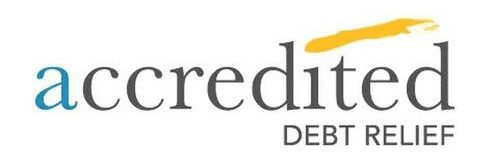As Mother’s Day approaches, it’s the perfect time to offer the moms in your life some much-needed financial advice. Whether you’re a working mom trying to balance your career and family, a stay-at-home mom trying to make ends meet, or a new mom navigating the challenges of parenthood, sound financial planning can help you achieve your goals and secure your family’s future.
In this article, we’ll explore some of the best financial advice for moms, including budgeting tips, saving strategies, and investment options. So if you want to give the special moms in your life the gift of financial security this Mother’s Day, read on!
1. Assessing the current financial situation

Assessing your current financial situation is the first step toward achieving financial stability and independence. It’s important to take stock of your income, expenses, debt, and savings. Here are some tips for assessing your current financial situation:
Create a budget
A budget is a crucial tool for managing your money and achieving your financial goals. Start by listing all your sources of income, including wages, investments, and other sources. Then, list all your expenses, including fixed expenses like rent or mortgage payments, utility bills, and transportation costs, as well as variable expenses like groceries, entertainment, and clothing. Use this information to create a monthly budget that balances your income and expenses.
Identify sources of income and expenses
It’s important to have a clear understanding of your sources of income and expenses. This will help you identify areas where you can cut costs and increase your income. Look for ways to reduce your expenses, such as shopping around for lower insurance rates or cutting back on non-essential purchases. You can also consider ways to increase your income, such as taking on a side hustle or asking for a raise at work.
Evaluate debt and savings
Take a close look at your debt and savings. Make a list of all your debts, including credit card balances, loans, and mortgages. Prioritize paying off high-interest debts first, while making minimum payments on other debts. As for savings, aim to have at least three to six months’ worth of living expenses in an emergency fund. Consider investing any extra money into retirement accounts or other long-term savings options.
By assessing your current financial situation, you’ll be able to identify areas for improvement and take steps toward achieving your financial goals. With careful planning and discipline, you can create a brighter financial future for yourself and your family.
2. Creating a financial plan

Creating a financial plan is the next step toward achieving financial security and independence. Once you’ve assessed your current financial situation, it’s time to set specific goals and develop a plan to achieve them. Here are some tips for creating a financial plan:
Set financial goals
Whether it’s saving for a down payment on a house, paying off debt, or saving for retirement, it’s important to set clear financial goals that are specific, measurable, and achievable. Write down your goals and break them down into smaller, more manageable steps.
Create a savings plan
Saving money is an essential part of any financial plan. Look for ways to cut costs and increase your savings, such as setting up automatic deposits into a savings account or putting away a percentage of each paycheck. Consider setting aside money for both short-term and long-term goals, such as emergency expenses and retirement.
Investing strategies
Investing can be a powerful way to grow your wealth over time. Consider different investment options, such as stocks, mutual funds, and real estate. It’s important to research your options and choose investments that align with your risk tolerance and financial goals.
Review and adjust your plan
Your financial plan should be a living document that you review regularly and adjust as needed. Life circumstances can change, so it’s important to make adjustments to your plan as necessary.
By creating a financial plan, you’ll be able to take control of your finances and work towards achieving your financial goals. With discipline and a long-term perspective, you can build a stronger financial future for yourself and your family.
3. Protecting the family’s financial future

As a mom, protecting your family’s financial future is one of the most important things you can do. From understanding insurance policies to creating a will, there are several steps you can take to safeguard your family’s financial security. Here are some tips to help you get started.
Understand insurance policies
make sure you have adequate insurance coverage for health, life, disability, and property insurance. Consider the potential risks that your family may face and ensure that your policies provide sufficient protection. Review your policies annually to ensure that coverage levels remain appropriate for your needs.
Estate planning
Estate planning involves preparing for the management and distribution of your assets after death. It includes creating a will, naming beneficiaries, and establishing trusts. A well-crafted estate plan can help minimize taxes, avoid probate, and ensure that your assets go where you want them to. Consult with an attorney to help you create a personalized estate plan that meets your specific needs.
Creating a will
A will is a legal document that sets forth your wishes regarding the distribution of your assets after death. It’s important to create a will that clearly outlines your wishes and appoints a trusted executor to manage the process. Without a will, your estate may be subject to probate and distributed according to state law, rather than your wishes.
Discuss finances with your partner and family
Open communication about finances is essential for ensuring that everyone is on the same page. Discuss your financial goals and plans with your partner and children. Involve your children in age-appropriate discussions about money, and encourage them to learn about budgeting and saving.
By taking these steps to protect your family’s financial future, you can rest assured that your loved ones will be taken care of financially, no matter what life throws your way. As a mom, you have a responsibility to ensure that your family is prepared for any eventuality, and these tips can help you do just that.
4. Teaching financial literacy to children

Start early
Children as young as three years old can begin to learn about money and its value. Use everyday activities, such as grocery shopping or going to the bank, to introduce your child to basic concepts, such as budgeting, saving, and spending.
Make it fun
Learning about money doesn’t have to be boring. Try incorporating games and activities, such as setting up a pretend store or doing a scavenger hunt, to teach your child about budgeting, investing, and saving. Fun activities can help your child stay engaged and interested in learning about money.
Set a good example
Children learn by observing their parents, so be mindful of your own financial behaviors. Model good financial habits, such as saving regularly and living within your means, to help your child develop healthy financial habits.
Give an allowance
An allowance is a great way to teach your child about the value of money. Have your child allocate their allowance into different categories, such as saving, spending, and giving. This can help them develop good money management skills and understand the importance of budgeting.
Use real-life examples
Help your child to understand financial concepts by using real-life examples. For example, when grocery shopping, explain how you’re comparing prices and looking for deals to save money. This can help your child learn how to make informed decisions about spending.
Financial education is crucial for children to develop healthy financial habits and make informed decisions about money. By teaching your child about money at an early age and making it fun and engaging, you can help them build a strong foundation for financial success in the future.
5. Build a support network

Building a support network of friends and family members who can provide emotional support during financial challenges can be helpful. Consider joining a local moms’ group or online community where you can connect with other moms who are navigating similar financial challenges. You can also seek advice and support from a trusted friend or family member who has experience managing their own finances.
Seek financial advice
Seeking financial advice from experts can be instrumental in helping you achieve your financial goals. Consider speaking with a financial advisor or planner who can provide personalized advice about investing, budgeting, and saving. Look for advisors who are experienced working with moms or women to ensure that they understand your unique needs.
Utilize resources for financial support
There are many resources available to help you achieve financial stability. Check out online resources such as blogs, podcasts, and social media accounts that offer financial tips and advice. You can also consider joining a local financial group or taking a financial education course to learn more about managing your finances.
Find a financial advisor
Finding a financial advisor who understands your specific needs and goals is crucial. Look for advisors who are experienced working with moms or women and who have a proven track record of success. You can also seek recommendations from friends and family members who have worked with financial advisors in the past.
Conclusion
In conclusion, securing your family’s financial future is one of the best things you can do as a mom this Mother’s Day and beyond. By making smart financial decisions, creating a budget, investing wisely, and protecting your assets with insurance, you can ensure a stable and secure future for your family. Remember to involve your partner and children in financial discussions, educate yourself about money matters, and seek professional guidance when necessary. With these strategies in place, you can enjoy the peace of mind that comes from knowing you’ve taken the necessary steps to ensure your family’s financial well-being.
FAQs

What are some important financial lessons that moms should teach their children?
Moms can teach their children the importance of budgeting, saving money, avoiding debt, investing wisely, and setting financial goals.
How can moms effectively manage their household budgets?
Moms can create a budget plan, track expenses, prioritize spending, reduce unnecessary expenses, and save money for emergencies.
What are some smart strategies for moms to save money on groceries and household expenses?
Moms can use coupons, buy in bulk, shop during sales, compare prices, and use cashback apps to save money on groceries and household expenses.
How can moms plan for their retirement and ensure financial security in their golden years?
Moms can start saving early, maximize their retirement contributions, diversify their investments, and work with a financial advisor to plan for retirement.
What are some effective ways for moms to pay off debt and improve their credit scores?
Moms can create a debt repayment plan, prioritize high-interest debts, negotiate with creditors, and make timely payments to improve their credit scores.
How can moms balance saving for their children’s education and their own retirement?
Moms can start saving for their children’s education early, explore different education savings plans, and balance their savings with their retirement contributions.
What are some common mistakes that moms make when managing their finances?
Common mistakes include overspending, neglecting retirement savings, not having an emergency fund, and not reviewing their financial plan regularly.
How can moms protect their financial assets and plan for unexpected events like disability or death?
Moms can purchase life and disability insurance, create a will and estate plan, and discuss their financial plan with their family members.
What are some effective ways for moms to increase their income and earn extra money?
Moms can explore part-time or freelance work, start a side business, monetize their skills and hobbies, or negotiate a raise or promotion at work.
How can moms teach their children about financial responsibility and prepare them for a financially successful future?
Moms can involve their children in household budgeting, teach them the value of money, encourage them to save and invest, and model good financial behavior.
Glossary
- Financial Planning: The process of assessing one’s financial situation, setting financial goals, and creating a plan to achieve those goals.
- Budgeting: The process of creating a spending plan to help manage income and expenses.
- Emergency Fund: A savings account set aside for unexpected expenses, such as job loss or medical bills.
- Retirement Planning: The process of setting aside funds for retirement, typically through a retirement account such as a 401(k) or IRA.
- Life Insurance: A policy that pays out a lump sum to beneficiaries in the event of the policyholder’s death.
- Disability Insurance: A policy that provides income replacement if the policyholder becomes disabled and unable to work.
- Estate Planning: The process of creating a plan for the distribution of assets after death.
- Tax Planning: The process of minimizing tax liability by utilizing tax deductions and credits.
- Investing: The process of putting money into financial assets with the goal of generating a return.
- Diversification: The practice of spreading investments across different asset classes to reduce risk.
- Compound Interest: Interest that is earned not only on the initial investment but also on any interest earned over time.
- Credit Score: A numerical representation of an individual’s creditworthiness, based on their credit history.
- Debt Management: The process of managing and paying off debt, typically through a debt repayment plan.
- Financial Advisor: A professional who provides financial advice and guidance to individuals and families.
- Financial Literacy: The knowledge and skills needed to make informed and effective financial decisions.
- College Savings: The process of setting aside funds for a child’s college education, typically through a college savings account such as a 529 plan.
- Tax-Advantaged Accounts: Accounts such as IRAs and HSAs that offer tax benefits to individuals who contribute to them.
- Risk Tolerance: An individual’s willingness to take on risk in their investments.
- Inflation: The rate at which the general level of prices for goods and services is rising, reducing the purchasing power of money.
- Net Worth: The difference between an individual’s assets and liabilities, used as a measure of their overall financial health.










